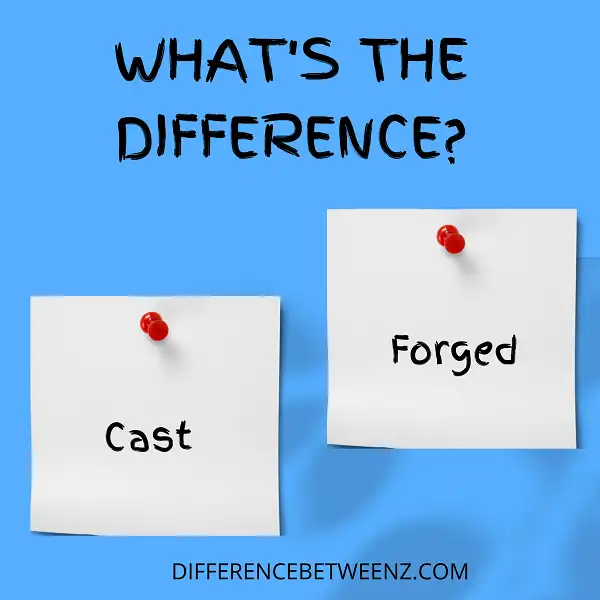Are you looking for a way to make your vehicle more reliable and improve its performance? If so, understanding the difference between cast and forged components could help you achieve these goals. Cast parts are much cheaper than their forged counterparts but possess certain advantages over them as well. In this blog post, we’ll take an in-depth look at what exactly casting and forging entail, before examining how each technique ultimately affects your vehicles’ performance. Learn all about cast versus forged – from material properties to pros and cons – so that you can decide which option is the best choice for your vehicle today!
What is Cast?
- The cast method of shaping material is a versatile technique used to produce desired shapes by pouring molten material into a mold and allowing it to cool. It can be used to create parts of almost any size, making it ideal for mass manufacturing.
- Cast objects can be anything from small jewelry pieces to large machine components. Through the use of different casting techniques such as sand, shell, and High-Pressure Die Cast methods, engineers are able to cast materials into complex shapes with relative ease.
- The cast method offers immense advantages over other production techniques due to its improved durability, ability to achieve high accuracy in designs, lower cost, and minimal wastage of material.
- The cast method plays an integral role in the production of various products in industries like automotive, engineering, electronics, and more.
What is Forged?
- Forging is a popular method of shaping material that has been used for centuries. The process involves heating and hammering an object into its desired shape, usually in the presence of a die or mould.
- Forgings can generally be divided into two categories: hot forgings, where the metal is heated until it is malleable, and cold forgings, which are usually done at room temperature.
- Forging is extremely popular when creating custom components due to its ability to produce quality parts with added strength and durability.
- Forged objects are often preferred overcast or machined components for uses such as automobile engine parts, power tools, and hand tools. Forging techniques have evolved over time but remain an integral part of metal fabrication.
Difference between Cast and Forged
Cast and Forged are two distinct methods of shaping materials such as metals, plastics, and rubber into useful objects.
- Cast products are made by pouring a liquid material, such as metal, into a specially-designed mold and allowed to cool until hardened in the shape of the mold.
- Forged products are created by heating a solid material and pounding it out into the desired shape. Cast items tend to be less expensive but generally weaker than forged items due to their porousness.
- Forged items are potentially stronger due to their denser molecular structure but require more costly equipment for production.
Ultimately, the process chosen is dependent on the desired outcome; Cast may be better suited for decorative pieces while Forged works best for heavier-duty objects that require strength and durability.
Conclusion
Understanding the difference between cast and forged golf clubs is important for anyone serious about playing the game. With a little research, you can find the perfect set of clubs for your individual swing and style of play. If you have any questions about which type of golf club is right for you, don’t hesitate to ask a professional at your local pro shop. They’ll be able to help you make an informed decision so that you can hit the course with confidence.


